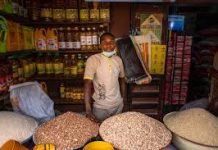Many experts rate livestock feed production as the most profitable agribusiness venture largely because the producer does not rear farm animals and thereby avoids the cost of feeding, veterinary care and risks such as illness and mortality.
In the same vein, while an estimated one billion tons of animal feed was sold worldwide in 2014, Nigeria alone produced about 3.8 million metric tons, which made the country the 40th largest producer in the world. Nigeria’s animal feed industry therefore has a major impact on the worldwide production and distribution of livestock feed, according to experts.
Statistics from the Nigerian Institute of Animal Science shows that Nigeria hit 5.3 million metric tonnes (MT) of animal feed in 2015, as it produced 3.2 million metric tonnes (MMT) of eggs, 1.1 million metric tonnes (MMT) of chicken meat, 647,750 metric tonnes of aquaculture, 265,000 metric tonnes of pork, 53,000 metric tonnes of milk, and 41,250 metric tonnes of beef, amongst others.
This figure has grown steadily in subsequent years, with the country experiencing leaps in the worldwide ranking of livestock feed producers, especially in the area of fish farming (aquaculture).
But what is livestock feed production about? It is manufacturing of animal feed using raw ingredients like corn, wheat, sorghum, forage, vitamins, additives, minerals, cassava and so on and mixing all into nutritious feed for specific dietary needs. For instance, there are different formulas for specific breeds and functions. Poultry has up to five different types of formula since you have to feed the chickens according to their function in the farm, like if they are broilers, layers and so on. Feed for dog food is also different from feed for poultry, ruminants and others.
There are many reasons why livestock feed production is gaining prominence. The first consideration is that it is a lucrative business and the market keeps growing due to increasing demand for animals as food, pet and animal products. In Nigeria, the feed is also cheap to produce where machinery can be fabricated locally and raw materials locally sourced.
Animal feed can be grouped according to livestock classification where poultry (chicken) feed are usually consumed by chickens, ducks, geese, and other domestic birds.
They could consist of one or more varieties of whole, cracked, or rolled grains. These feeds can also be served through troughs, hoppers, tube feeders, scratch grains or scattered on the ground. Poultry feed is one of the most sought-after animal feed products, because of the volume of poultry animals raised in many parts of the world yearly.
Common categories of poultry or chicken feed include Layer Mesh, Broiler Mesh, Chick/Starter Mesh, and Grower Mesh. If you must start a livestock feed production business, manufacturing poultry feed is quite essential and commands more demand.
Other types of feed you cannot ignore include fish food or pellets, which are used to balance the nutrition needed by domesticated fishes. They are usually in pelletised or granule forms, and are composed of high quality nutrients like vegetable proteins, cereal grains, vitamins and minerals, to enable the fishes feed efficiently and grow to their full potential.
High quality fish food are always in high demand to feed the many fish farms scattered across the country. You can take advantage of the market’s preference for this product type and sell slightly below market price to break into the market. Some other livestock feed business opportunities to explore include Pig Feed Production, Goat Feed production, Cattle Feed Production. Dog Food Production, Cat Food Production and so on.
When you have decided the type of feed you would be producing, it is important to create a feed formula for each feed type. You already know that one feed type has to be different from the other, that is to say fish feed should be different from poultry feed and you have to vary nutrients to aid the animal perform its required function in the farm.
It is best you attend proper training to get the right formula to mix. The training would also advise on the specific equipment to purchase like grinders, blenders and mixers, pelleters, steam boiler, scales, sifters, bag sewers, and so on. After manufacturing your livestock feed, the next step is to package it right for the market. It is always best to follow the standards of the most successful product out there.
By doing this, your packaging will ring a quality alarm anytime a person comes across your product in the market for the first time. Selling the finished product can also be very interesting as there are many ways to do so. You can build a periodic supply chain to stores, own a distribution outlet, build an on-field sales team or adopt other strategies.
However, it is important to do a comprehensive business plan and pay attention to pitfalls such as high cost of production, lack of training / experience in production, processing and storage of raw materials, marketing and so on.
Livestock is a major source of food and other needs for the over 170 million people in Nigeria, and feeding the different animals offers a huge potential market which keeps growing. All you have to do is decide which type of feed you wish to specialize in and ensure you produce high quality feed with good packaging – and you are in big business!














